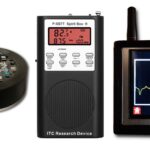Component temperature prediction is important from a number of points of view. Historically component temperature has been correlated with reliability, with early studies relating field failure rates to component temperature.
More recently physics-based reliability prediction has related failure rates of electronic assemblies to the magnitude of temperature change over an operational cycle (power-on, power-off, power-on…), and rate of temperature change, both of which are influenced by steady-state operating temperature. Failures are often attributed to solder joint fatigue.

In some applications, like computing, CPU speed is adversely affected by temperature, and in other cases components have to run at very similar temperatures to avoid timing issues. High temperatures can cause operational issues, such as latchup. Whether the intention is to increase reliability, improve performance, or avoid problems during operation, accurate prediction of component temperatures helps thermal designers to achieve their goals.
- Model Key Components Explicitly
- Use Good Power Estimates
- Use The Right Package Thermal Model
- Use Compact Thermal Models From Early Design
- Create Your Own Models As Required
- Use Power Maps
- Validate Detailed Models With Experiments
- Design Custom Heatsink Solutions
- Accurately Capture Thermal Interface Material Resistance
- Provide Accurate Temperatures for Mechanical Stress Prediction
Download the full whitepaper from Mentor Graphics.
www.mentorgraphics.com







Leave a Reply
You must be logged in to post a comment.